Microsoft Health
Redesign drove 2× engagement and a sold-out launch; 80% six-month retention in a 4k study.
Engaging Healthcare
- Role: Senior Design Manager, leading product transformation and multidisciplinary design team
- Goal: Drive engagement through behavior-changing experiences
- Stakeholders: PM, SW/HW Engineering, Clinical Researchers, Data Science, ID, Marketing
- Led design strategy for consumer-facing wearable and health platforms
- Increased user engagement 2x and drove a sold-out product launch
- Partnered across research and business to land enterprise contracts with hospitals and pharma clients
The Challenge
Disengaged patients have worse outcomes and higher healthcare costs. Our challenge: How can we help people stay engaged and follow through on care?
I focused on behavior change through design across mobile, web, and wearables. I led a team of 20+ designers, prototypers, and researchers. We worked closely with CVP-level leaders to define strategy and execute innovation.
- Problem: Low retention post-onboarding
- Root Cause: Overemphasis on raw metrics created negative experiences
- Goal: Evolve from a tracking tool to a sustainable behavior change platform
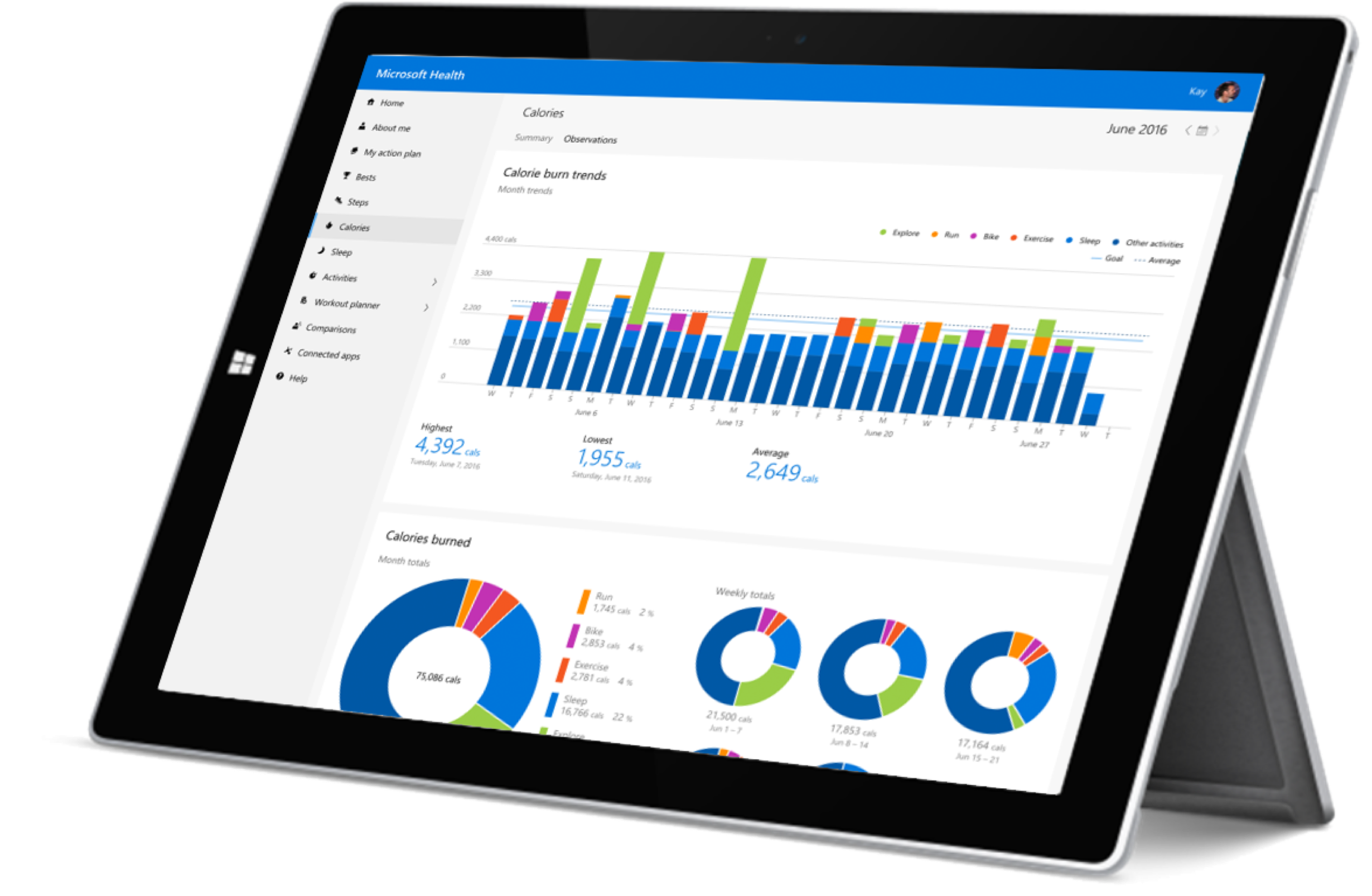
Strategic Insight: Wellness vs Metrics
In a space defined by complexity, I built a dedicated innovation team and introduced a flexible ideation process to drive rapid experimentation, both internally and with external partners.
Our user research showed that raw numbers created anxiety and disengagement. Users responded far better to positive reinforcement and progress narratives.
- Insight: Wellness habits engage more than numeric performance
- Solution: Reframe the product around habit-building, not just metrics
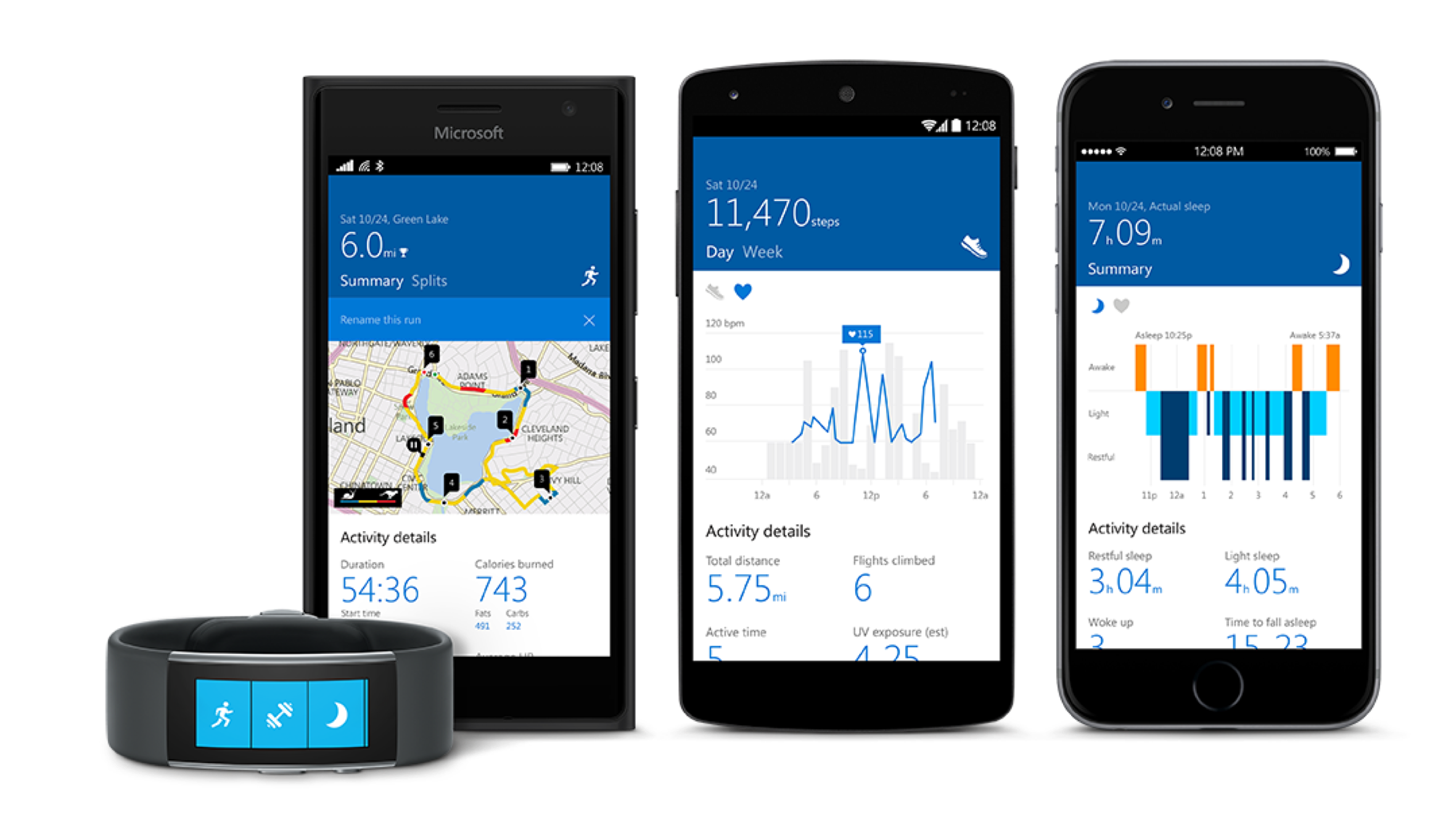
Behavioral Mechanisms
We grounded the experience in behavioral science:
- Loss Aversion: Users protect progress streaks
- Social Proof: Peer comparisons build motivation
- Goal Gradient: Users engage more near progress milestones
- Positive Reinforcement: Small wins, not perfection, drive momentum
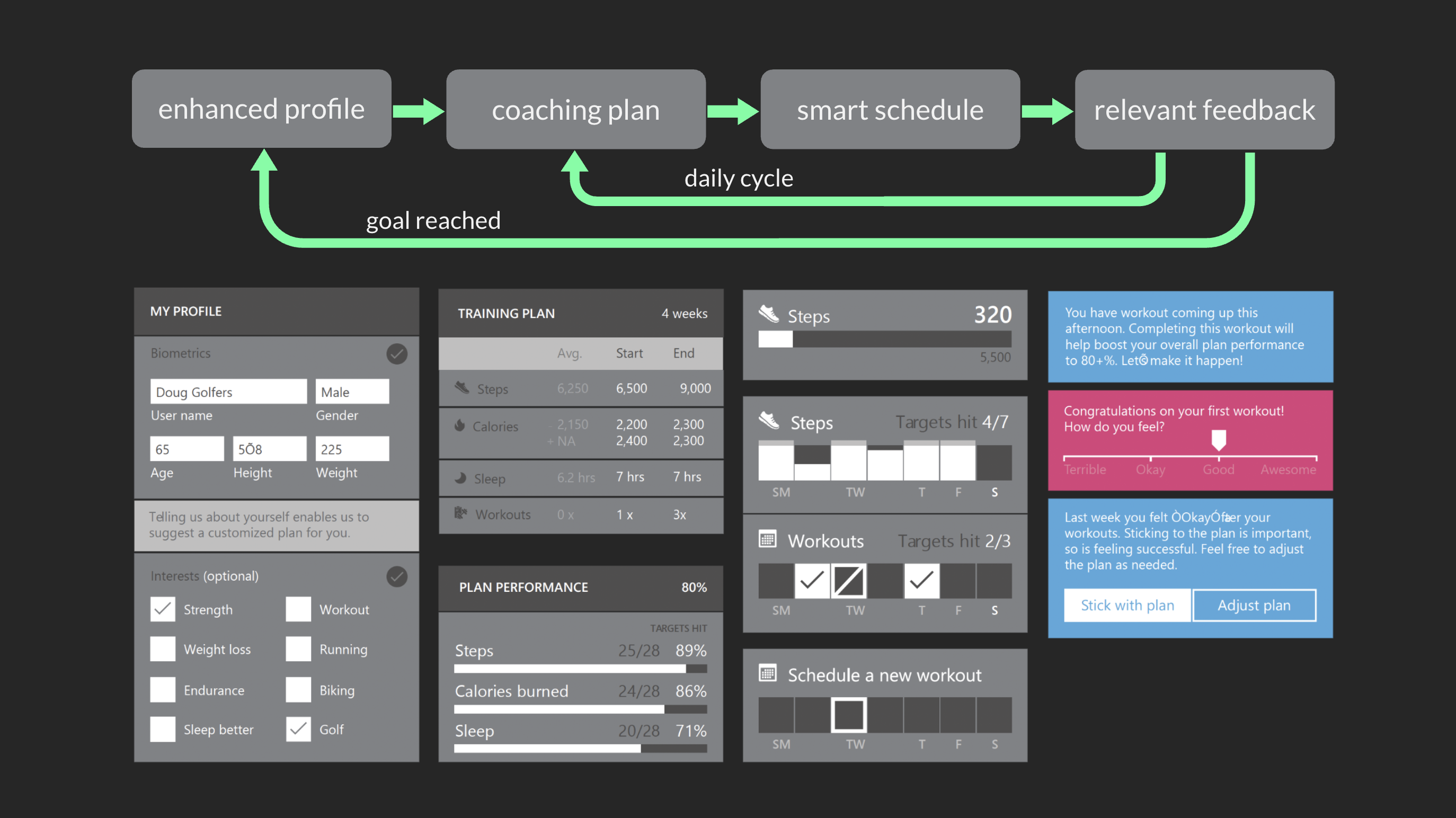
Research-Driven Approach
I turned our team into a bridge between Microsoft Research and product teams. With an 800-person beta pool, we tested and refined real-world solutions:
- Habit Prediction Models: ML to anticipate metrics
- Activity Maximization System: Personalized prompts via AI
- Sleep Improvement Systems: Millions of events to optimize rest
- Behavior Change Study: Field research to validate our approach
These studies influenced roadmap decisions and powered product innovation.
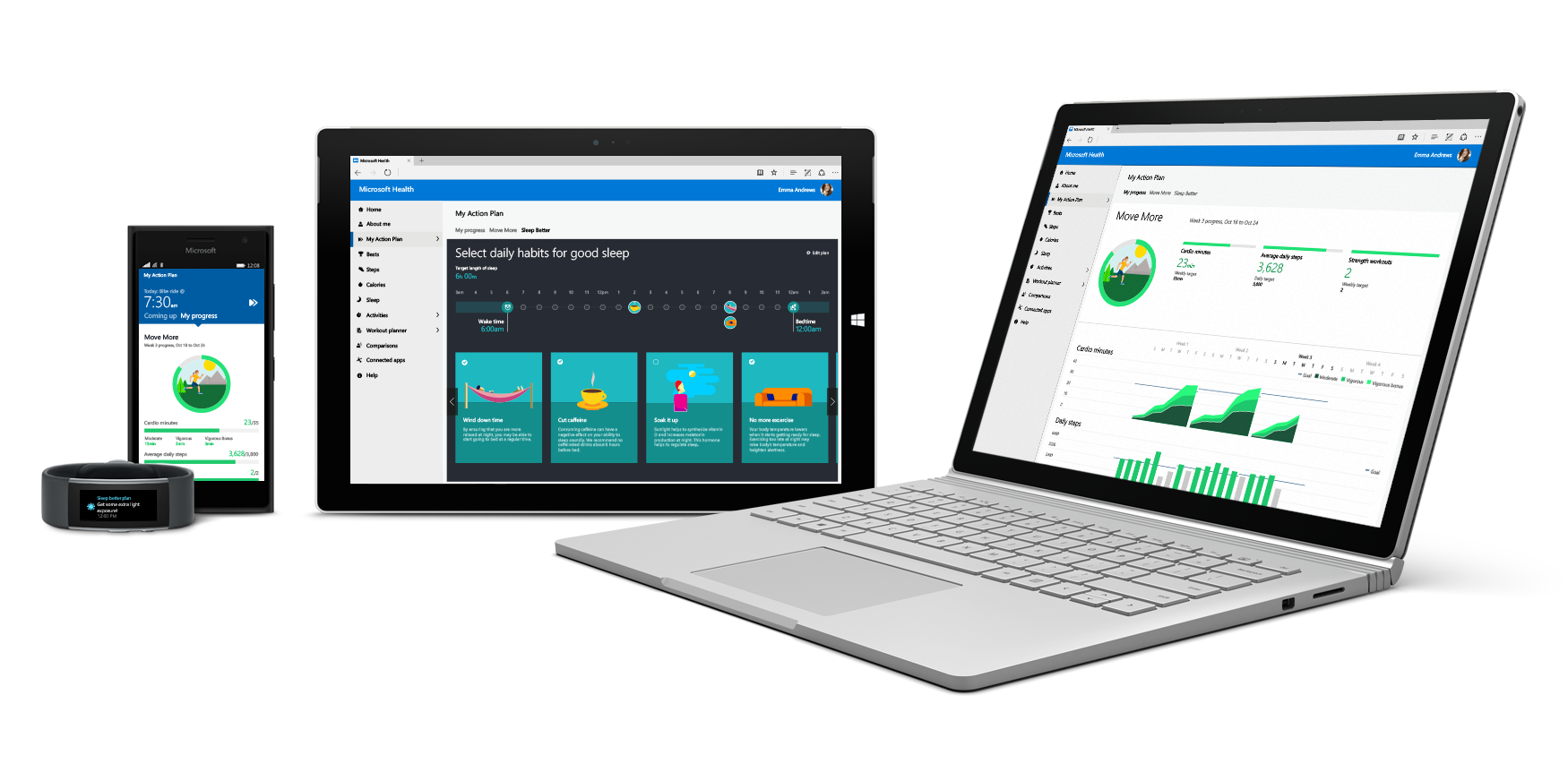
Metrics and KPIs
Activity and sleep study: 4,000 participants over 6 months
Outcome: 80% retention at 6 months (vs 40% baseline)
User Tracking Up:
- +30% sleep event logging
- +27% exercise logging
Health Improvements:
- +5% daily steps
- +36 cardio minutes/week
- +10% sleep recovery
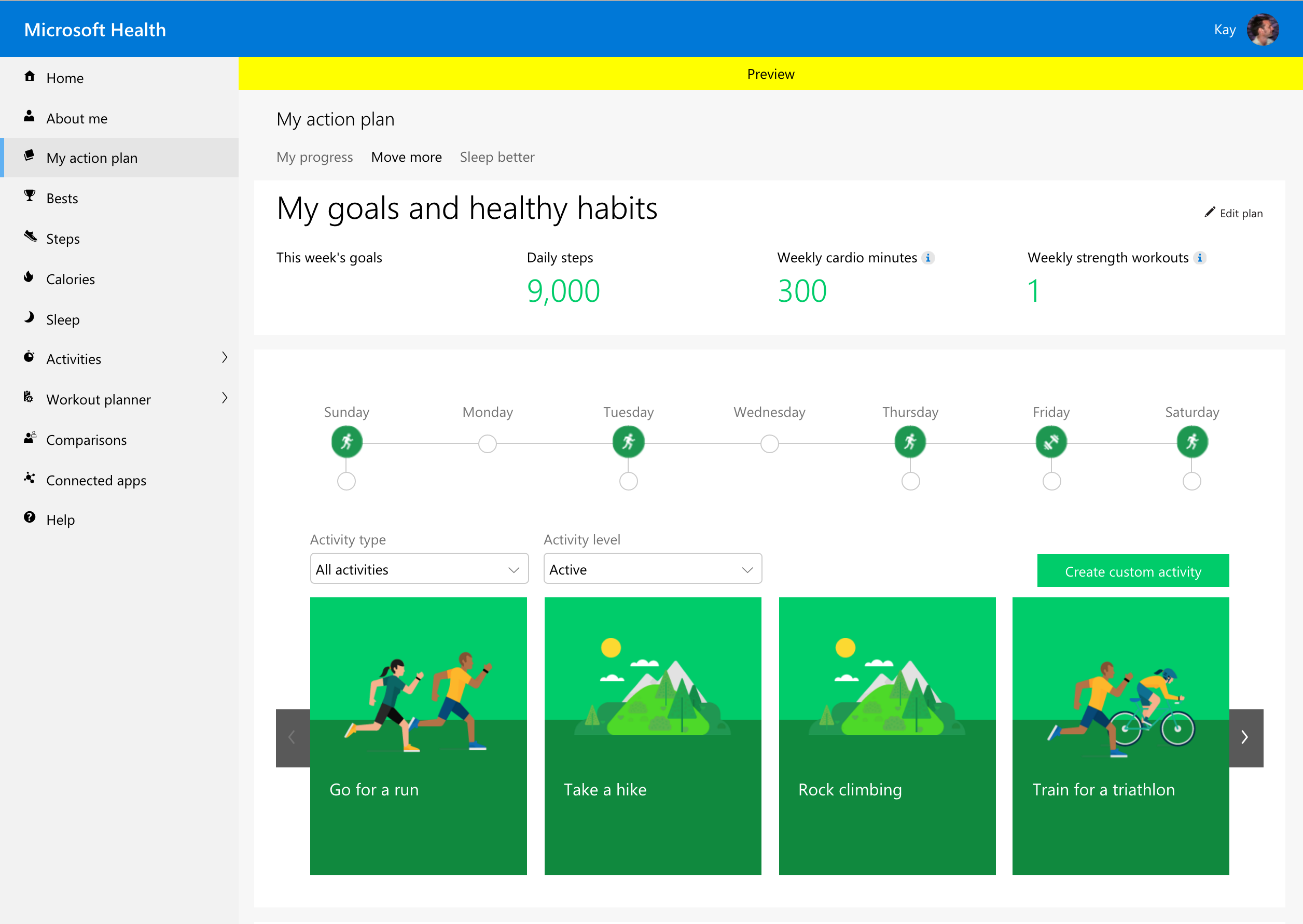
Impact
- Strategic Leadership: Unified cross-functional teams around behavior-first design
- Product Evolution: Transformed low-engagement app into wellness platform
- Business Results: Boosted retention and lifetime customer value
- Org Influence: Design patterns adopted across Microsoft Health org